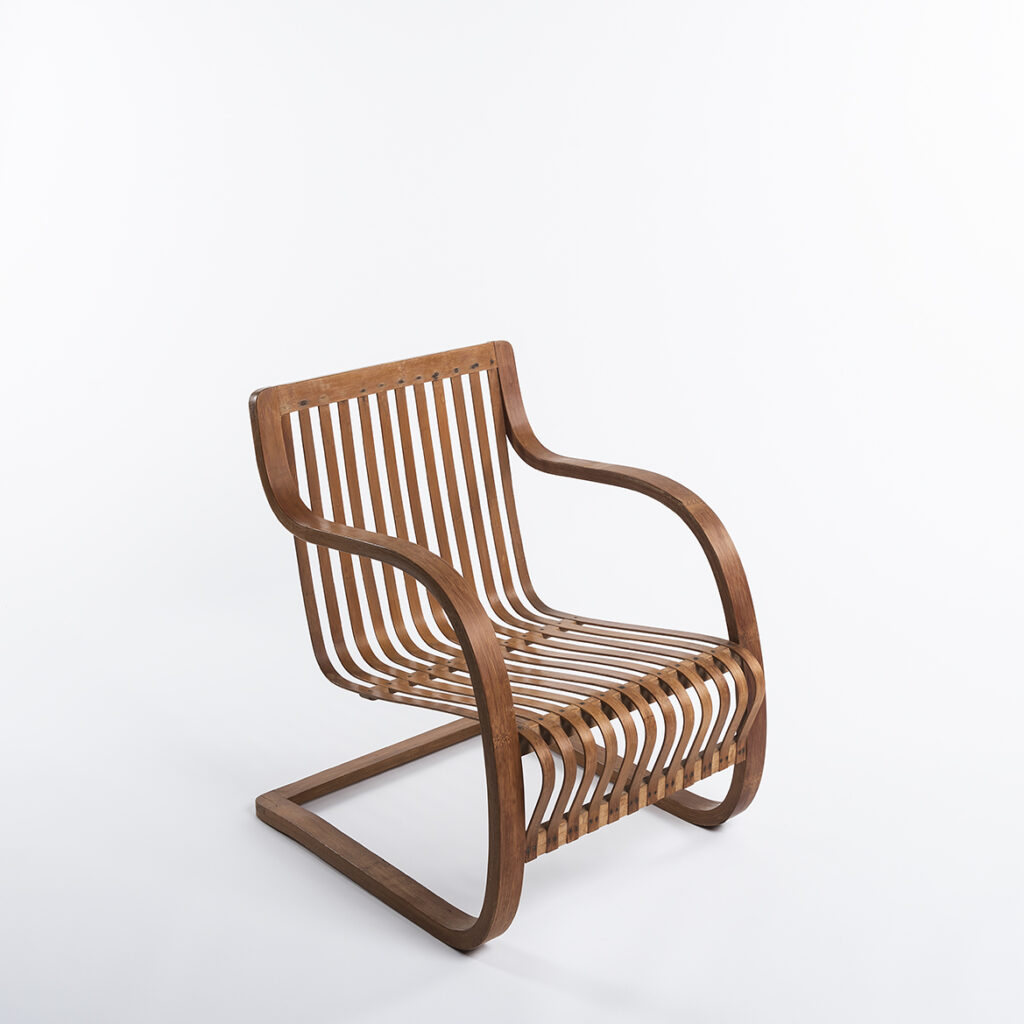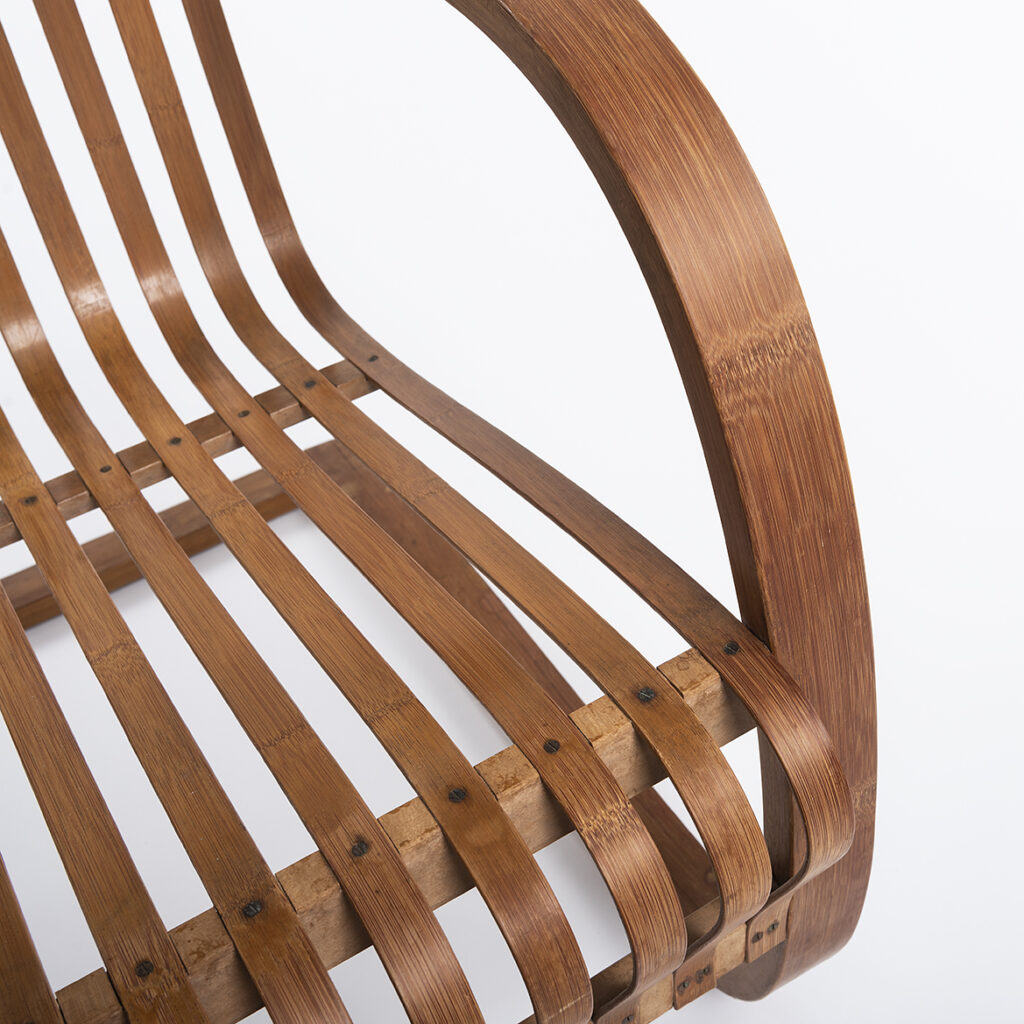




Pair of bamboo chairs
Made in 1933
Made by the japanese cabinetmaker Ubunji Kidodoro.
The shape is a curved surface, supported between two U-shaped sections that meet at the top of the backrest. The seat is cantilevered and does not require rear legs, bending slightly with the weight of a person. The design is based on an armchair by Alvar Aalto from the early 1930s and demonstrates the influence of Scandinavian design at the time. The first version was developed in 1937 for Mitsukoshi, a department store that was instrumental in introducing and promoting European modernism in Japan. Aalto’s armchair, and Kidokoro’s later version, expresses an artisanal response to the Bauhaus and international modernist style, using warm, natural materials instead of cold metals.
In the 1940s, Charlotte Perriand exhibited the Kikokoro armchair in the Takashimaya department stores in Tokyo and Kyoto and produced furniture designs using similar methods. The Kikokoro armchair perfectly illustrates the mutual exchange and influence between Western and Japanese modernisms.
Laminated plywood and strips of bamboo fixed with brass dowels

